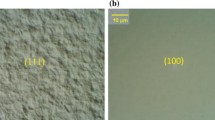Abstract
We review recent advances in the HgCdTe material quality and detector performance achieved at Teledyne using molecular beam epitaxy growth and the double-layer planar hetero-junction (DLPH) detector architecture. By using an un-doped, fully depleted absorber, Teledyne’s DLPH architecture can be extended for use in high operating temperatures and other applications. We assess the potential achievable performance for long wavelength infrared (LWIR) hetero-junction p-lightly-doped n or p-intrinsic-n (p-i-n) detectors based on recently reported results for 10.7 μm cutoff 1 K × 1 K focal plane arrays (FPAs) tested at temperatures down to 30 K. Variable temperature dark current measurements show that any Shockley–Read–Hall currents in the depletion region of these devices have lifetimes that are reproducibly greater than 100 ms. Under the assumption of comparable lifetimes at higher temperatures, it is predicted that fully-depleted background radiation-limited performance can be expected for 10-μm cutoff detectors from room temperature to well below liquid nitrogen temperatures, with room-temperature dark current nearly 400 times lower than predicted by Rule 07. The hetero-junction p-i-n diode is shown to have numerous other significant potential advantages including minimal or no passivation requirements for pBn-like processing, low 1/f noise, compatibility with small pixel pitch while maintaining high modulation transfer function, low crosstalk and good quantum efficiency. By appropriate design of the FPA dewar shielding, analysis shows that dark current can theoretically be further reduced below the thermal equilibrium radiative limit. Modeling shows that background radiation-limited LWIR HgCdTe operating with f/1 optics has the potential to operate within √2 of background-limited performance at 215 K. By reducing the background radiation by 2/3 using novel shielding methods, operation with a single-stage thermo-electric-cooler may be possible. If the background radiation can be reduced by 90%, then room-temperature operation is possible.
Similar content being viewed by others
References
C.H. Grein, P.M. Young, and H. Ehrenreich, Appl. Phys. Lett. 61, 2905 (1992).
M. Kinch, Fundamentals of Infrared Detector Materials (Bellingham: SPIE, 2007), p. 33.
T. Ashley and C.T. Elliot, Electron. Lett. 21, 451 (1985).
T. Ashley, C.T. Elliot, and A.T. Harker, Infrared Phys. 26, 303 (1986).
P. Martyniuk and A. Rogalski, Opto Elect. Rev. 21, 240 (2013).
W. Tennant, D. Lee, M. Zandian, E. Piquette, and M. Carmody, J. Electron. Mater. 37, 1406 (2008).
W.E. Tennant, J. Electron. Mater. 39, 1030 (2010).
T. Ashley, N. Gordon, G. Nash, C. Jones, C. Maxey, and R. Catchpole, Appl. Phys. Lett. 79, 1136 (2001).
P. Klipstein, D. Aronov, E. Berkowicz, R. Fraenkel, A. Glozman, S. Grossman, O. Klin, I. Lukomsky, I. Shtrichman, N. Snapi, M. Yassem, and E. Weiss, SPIE Newsroom (2011). doi:10.1117/2.1201111.003919.
C. McMurtry, D. Lee, J. Beletic, A. Chen, R. Demers, M. Dorn, D. Edwall, C.B. Fazar, W. Forrest, F. Liu, A. Mainzer, J. Pipher, and A. Yulius, Opt. Eng. 52, 091804 (2014).
J. Lindle, W. Bewley, I. Vurgaftman, C.S. Kim, J. Meyher, J. Johnson, M. Thomas, E. Piquette, and W. Tennant, IEEE J. Quant. Electron. 41, 227 (2005).
P. Capper and C.T. Elliot, Infrared Detectors and Emitters: Materials and Devices (New York: Springer, 2001), p. 197.
W. Tennant, U.S. patent 20070290132.
M. Kinch, Appl. Phys. Lett. 94, 193508 (2007).
A.L. McWhorter, Semiconductor Surface Physics (Philadelphia: University of Pennsylvania Press, 1957), p. 207.
S. Tobin, IEEE Trans. Electron. Devices 27, 43 (1980).
D. Lee, S. Liberman, and A. Mestechkin, Proc. IRIS Detect. 1, 109 (1992).
M.H. Tsai, T.P. Ma, and T.B. Hook, IEEE Electron. Device Lett. 15, 504 (1994).
R. Hirano, JX Materials, unpublished research, 2015.
J. Caulfield, J. Curzan, J. Lewis, N. Dhar, in Proc. SPIE, (2015), p. 9451.
Author information
Authors and Affiliations
Corresponding author
Rights and permissions
About this article
Cite this article
Lee, D., Carmody, M., Piquette, E. et al. High-Operating Temperature HgCdTe: A Vision for the Near Future. J. Electron. Mater. 45, 4587–4595 (2016). https://doi.org/10.1007/s11664-016-4566-6
Received:
Accepted:
Published:
Issue Date:
DOI: https://doi.org/10.1007/s11664-016-4566-6




